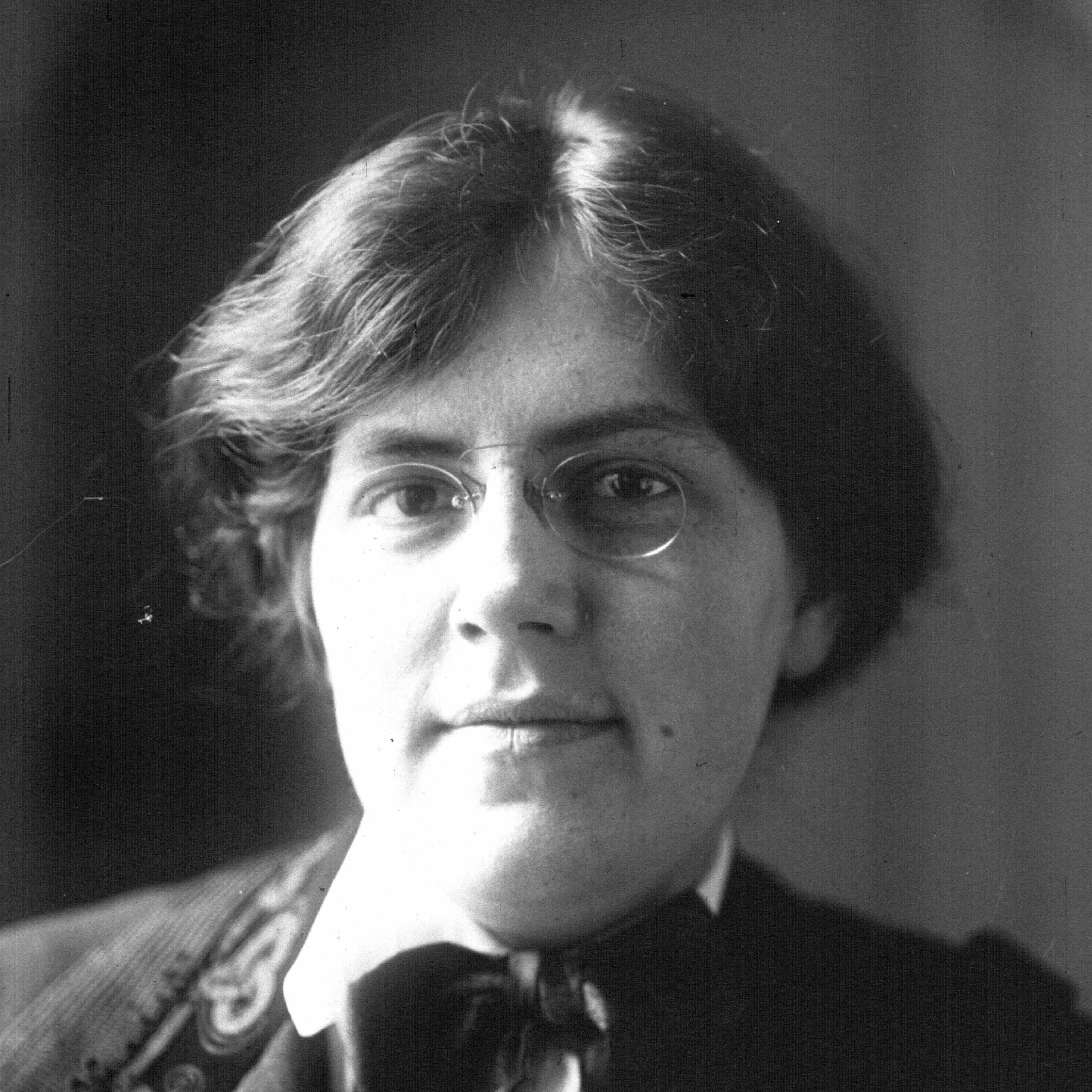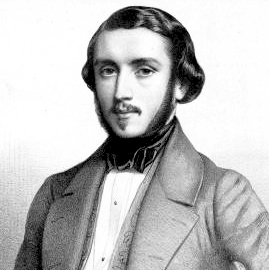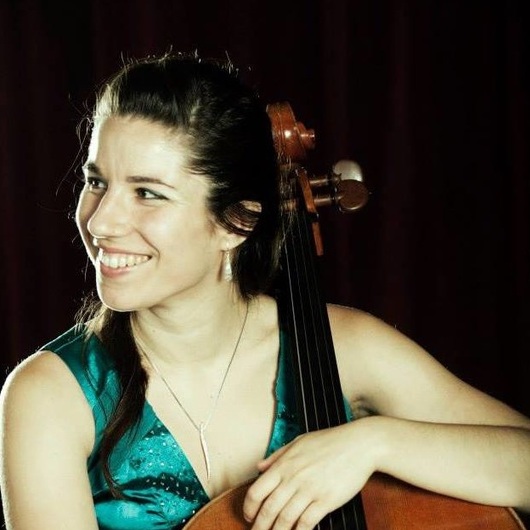Madison Symphony Orchestra Program Notes
Overture Concert Organ
Series No. 4
April
18, 2023
J. Michael Allsen
Our final Overture Concert Organ Series
concert features our own Greg Zelek, and the welcome return
of cellist Thomas Mesa. They appeared together on this
series in 2019, and Mr. Mesa returned in November 2021 for
memorable performances of the Dvořák
Cello Concerto with the Madison Symphony Orchestra.
They open with a well-known Romantic work, which they have
adapted for the combination of cello and organ: Jules
Massenet’s famous Meditation from
“Thaïs.” Next is a pair of works by J.S, Bach, the
introspective Prelude from his Cello
Suite
No.1, and the brilliant Fugue in D Major. After an
adaptation of the Trois Pièces of Nadia Boulanger,
each performer takes a solo turn, beginning with the Boléro de Concert, a
Spanish-flavored organ work by Alfred Lefébure-Wély. Mr.
Mesa presents SEVEN, an
emotional reflection on the COVID-19 pandemic for
unaccompanied cello, written for him in 2020 by Andrea
Casarrubios. Our
finale is the world premiere of the Sonata for Cello
and Organ by the young composer Daniel Ficarri.
 Jules Massenet (1842-1912)
Jules Massenet (1842-1912)
Meditation
from “Thaïs” (arr. Zelek/Mesa)
Massenet was part of the generation of
French composers who came into prominence in the years after
France suffered a humiliating defeat in the Franco-Prussian
War of 1870-71. This was a time when the government poured
funding into French arts to make them a symbol of France’s
restored power and prestige. Massenet became a prominent
member of the National Society of Music, founded to promote
French art music, and he would eventually be a composition
professor at the Paris Conservatory. The prolific
Massenet was particularly successful in the late 19th
century as an opera composer, writing over 25 operas, though
only a few of them—notably Manon, Werther, and Thaïs—are regularly
heard today. His Thaïs
(1894) was based upon a popular novel by Anatole France,
itself a retelling of a story from the 10th century. The
opera tells the story of Thaïs, a courtesan in pagan
Alexandria, who is converted to Christianity by the monk
Athanaël. She eventually dies in glory as St. Thaïs of Alexandria, while Athanaël is
never able to shake his guilt over his sexual attraction
towards her. The opera was a bit scandalous in its time, not
only for the anti-clerical nature of the plot, but also for
the steamy scenes of Thaïs’s life before her conversion. (At
the first performance, soprano Sibyl Sanderson, singing the
title role, had a notorious—and probably
deliberate—“wardrobe malfunction” that exposed her breasts
in one scene.)
The famous Meditation is drawn
from Act II, where it is an instrumental intermezzo that
represents the moment of Thaïs’s conversion. It was already
being played as an independent concert piece in the 1890s,
and remains one of Massenet’s most popular works. It is most
often heard in the original version for solo violin, but the
piece has since been appropriated by nearly every possible
instrument, from cello, flute, and saxophone to euphonium,
harmonica, and pan flute. Heard here in an adaptation for
cello and organ, it is a gorgeous, long-breathed melody from
the cello that develops above a sonorous organ background.
There is a moment of turbulence near the middle, probably
intended to represent Thaïs’s spiritual struggle,
 Johann Sebastian Bach (1685-1750)
Johann Sebastian Bach (1685-1750)
Prelude
from
Cello Suite No.
1 in G Major, BWV 1007
Fugue from Prelude
and Fugue in D Major, BWV 532
Bach spent the years 1717-1723
in the provincial court at Cöthen, working as
Kapellmeister to the music-loving Prince Leopold of
Anhalt-Cöthen. Since the prince was a Calvinist, there was
little call for the kind of sacred vocal works and organ
music that dominated much of Bach’s career, and this was
the most concentrated period of secular composition in his
life. As the court music director, Bach had an orchestra
of 17 fine players to work with, and he responded with
many of his finest instrumental works: concertos—including
most of the famous “Brandenburgs” —his orchestral suites,
and several chamber works. Among the most amazing works he
produced during this period were two sets of pieces for
unaccompanied strings, the sonatas and partitas for
violin, and the suites for cello. Though both sets were
clearly composed for Cöthen, precisely when he wrote his
cello suites is unclear. Unlike the violin sonatas and
partitas, which Bach copied in 1720, the cello suites were
not copied until much later, in a manuscript written by
his second wife Anna Magdalena in 1728. They were most
likely composed for Carl Bernhard Lienecke, a cellist in
the Cöthen orchestra, though the sixth suite seems to have
originally composed for a Baroque variant of the cello,
the five-string violoncello de spalla. The suites
were known in the 19th century, but it was not until the
early 20th century, when Pablo Casals began to make them a
regular part of his repertoire, that they became truly
well-known. The Six Suites for Unaccompanied
Cello are now among the standard repertoire for all
cellists. Like all of the set, the Suite No. 1
includes a prelude and a collection of standard French
dances, each in two sections. Its Prelude,
certainly the best-known movement of all of the suites, is
a lovely series of harmonies laid out in a long series of
arpeggios.
Bach’s
earliest professional position, at age 17, was in Weimar,
at the court of Duke Johann Ernst III. Bach later
described his position as a “court musician,” but the
court records actually describe him as a
“lackey”—low-ranking musicians were apparently also
expected to perform more menial work as well. It is
probably not surprising that Bach left Weimar after only
six months to take a much more attractive position as a
church organist in Arnstadt, where he worked from 1703-07.
After serving in a second, more prestigious organ position
in Mühlhausen (1707-08), he was lured back to Weimar,
where he would remain until 1717, eventually serving as Konzertmeister (music director). In his
early years at Weimar, Bach concentrated primarily on
keyboard works. The court chapel had a fine
newly-renovated organ, and the Duke was apparently a great
fan of Bach’s organ works. According to Bach’s obituary,
the Duke’s encouragement “fired him with the desire to try
every possible artistry in his treatment of the organ.”
Many of the 48 preludes and fugues later published as The Well-Tempered
Clavier were written there, as were all but three of
the 46 Lutheran chorale preludes published in his Orgelbüchlein.
His Prelude and Fugue in
D Major, BWV 532, written in about
1710, was one of the most imposing works he composed in
Weimar. (The bravura style of this work made it a
particular favorite of Romantic pianists, and there are
transcriptions by Liszt and Busoni. There is also a
colorful orchestral arrangement from 1929 by Respighi.)
The Fugue, heard here, has a witty 16th-note
subject in two parts that becomes particularly impressive
when it is laid out on the pedals. Near the end, the
pedals have a short cadenza sweeping up two octaves before
a surprisingly abrupt conclusion. It is amusing to note
that one of the 18th-century manuscript copies of this
work includes the remark: “In this piece one must really
let the feet kick around a lot.”
 Nadia Boulanger
(1887-1979)
Nadia Boulanger
(1887-1979)
Trois Pièces for Cello and Piano (arr.
Zelek/Mesa)
Teacher, performer, and composer Nadia
Boulanger was one of the most influential women in French
music for decades. Her father taught composition at the
Paris Conservatory, and Nadia herself entered the
Conservatory at age 10. Boulanger toured extensively as a
piano soloist in the years before World War I, and she was
also a fine organist. (Aaron Copland wrote his Symphony
for Organ and Orchestra for her in 1925, and she
introduced it during an American tour.) She was the composer
of a modest number of works, primarily songs and other vocal
works, but stopped composing in the early 1920s. Boulanger
was very self-critical, often revising and sometimes
abandoning her own works. Her biographer Caroline Potter
suggests that this may have been what led her to teaching
composition, and it was in fact as a teacher that Boulanger
had the broadest impact. In a career that stretched for well
over 70 years, she taught in French conservatories,
including the Paris Conservatory, and spent the years of
World War II teaching in the United States. In 1921, she was
one of the founders of the American Conservatory at
Fountainbleau, a program that attracted the most promising
composers from the Americas. At Fountainbleu, Boulanger
taught Copland and virtually his entire generation of
American composers, as well as younger figures like Astor
Piazzolla, Leonard Bernstein, Philip Glass, and Quincy
Jones.
Boulanger’s Three Pieces for Cello
and Piano were composed in 1914. This brief set opens
with a movement marked Modéré (moderate): a lyrical
cello melody played above a gentle, transparent organ
accompaniment. When this melody repeats, it is answered by
the organ, leading to a short and more agitated middle
section, before a return to the opening character at the
end. The second movement, Sans vitesse et á l’aise
(without rushing and relaxed) has a simple, almost folklike
melody in the cello. The tempo and intensity increase
momentarily before a return of the placid main theme. The
final movement is marked Vite et nerveusement rythmé
(lively and nervously rhythmic). In its opening section, the
cello and organ constantly trade roles, each taking turns
playing a blustery dance melody and the simple accompaniment
part. There is a new theme in 5/8 that subtly continues the
rhythmic drive before a sudden slowing and an expressive
cello statement. The piece with a sudden acceleration, a
reprise of the opening dance melody by the cello and a wild
concluding passage.
 Alfred
Lefébure-Wély (1817-1869)
Alfred
Lefébure-Wély (1817-1869)
Boléro de Concert, Op. 166
Alfred Lefébure-Wély was born in Paris, son of the organist at the
church of Saint-Roch. He made his public debut there at
age 8, and by age 14, when he entered the Paris
conservatory, Lefébure-Wély had also succeeded his father as organist at
Saint-Roch. He would eventually become organist at the
Paris churches of La Madeleine (1847-1858) and Saint-Sulpice (from 1863 until his death). He was a
successful composer in his time, publishing some 200
works, including an opera, and was particularly well-known as
a composer of lighter works, such as variations on popular
opera themes. He also became a fixture at the fashionable
artistic salóns of Paris’s wealthy aristocracy.
Though Lefébure-Wély was at perfectly at home on the large concert
organs of the day, including the enormous Cavaillé-Coll
instrument at Saint-Sulpice, he also published many works included intended
for the harmonium, the small, foot- pumped organ found in
upper-class French homes. One of these is his best-known
work, the Boléro de Concert, published in 1865
with a dedication to one of his aristocratic patrons, the
Comtesse Bois de Mouzilly. Spanish musical style, with its
hint of exoticism, was always popular in late 19th-century
France, and the Boléro de Concert is an adaptation
of a triple-meter Spanish dance. Much of the French organ
heard at these concerts was written to exploit the
resources of enormous concert organs, but this is music
that makes effective use of much more restricted palette
of musical colors: harmoniums had no pedalboard, and
usually just a single manual and a very limited number of
stops. (Mr. Zelek has adapted this work to include some
pedal work, but it retains the restrained character of the
original.) The Boléro de Concert begins with a
melodramatic minor-key dance theme and a chromatic second
theme. There is a brighter, major-key middle section,
before the opening music returns at the end.
 Andrea Casarrubios (b. 1988)
Andrea Casarrubios (b. 1988)
SEVEN
Spanish-born cellist and
composer Andrea Casarrubios has played as a soloist and
chamber musician throughout Europe, Asia, Africa, and the
Americas. She has enjoyed increasing success as a
composer in recent years, and her works have been
programmed worldwide, presented by organizations such as
the Philadelphia Orchestra, the Chicago Symphony
Orchestra, the Indianapolis Symphony Orchestra, the
Sphinx Organization, Washington Performing Arts, Manhattan
Chamber Players, the European Parliament, NPR, and the
Spanish National Radio. Her SEVEN for solo cello
was commissioned by Thomas Mesa, for his recording Songs
of Isolation. Composed in New York City in 2020, it
is one of an increasing number of musical works that
reflect on the experience of COVID-19. Casarrubios
provides the following note:
“SEVEN
is a tribute to the essential workers during the global
COVID-19 pandemic, as well as to those who lost lives and
are still suffering from the crisis. Written in Manhattan,
the piece ends with seven bell-like sounds, alluding to
New York’s daily 7 PM tribute during the lockdown, the
moment when New Yorkers clapped from their windows,
connecting with each other and expressing appreciation for
those on the front lines.”
One reviewer called the
work “a hauntingly beautiful tribute” and “a work that
will grip your heart and punch you in the stomach in the
most beautiful, cathartic, and absolutely necessary way.”
It is a work of quiet intensity, at the beginning working
its way through a series of solemn laments to a tense
climax. The opening mood returns briefly, before the seven
increasingly quiet “bell-like sounds” that end the work. SEVEN
is one of the most moving and effective responses to the
collective experiences we shared—without being
together—during the pandemic that I have yet heard:
expressing the isolation, sadness, and fear of the 2020
lockdown.
 Daniel Ficarri (b.
1996)
Daniel Ficarri (b.
1996)
Sonata for Cello and Organ
(world premiere)
The 27-year-old organist and composer
Daniel Ficarri has already accomplished a lot in a short
time, and has been named one of the top “20 under 30” by The
Diapason (the leading trade journal of the organ
world). He studied organ with Paul Jacobs at the Juilliard
school, and studied composition with Rachel Laurin. Ficarri
currently occupies one of the most prestigious organ benches
in the United States: he is Associate Director of Music and
Organist at the Cathedral of St. John the Divine in New York
City. He also maintains an active career as a soloist,
performing with several of them nation’s leading orchestras
and in concert halls and churches throughout the country. As
composer, he has published some two dozen works for solo
organ as well as chamber music for organ and other
instruments, and vocal and choral works. His Sonata for
Cello and Organ was commissioned for
Greg Zelek and Thomas Mesa though a generous gift from
Fernando and Carla Alvarado. The Alvarados are longtime
supporters of the Madison Symphony Orchestra, and the
Friends of the Overture Concert Organ. Ficarri provides
the following note on the work:
“I composed this cello and
organ sonata over a period of about seven months, from
March to September of 2021. The first ideas came after
listening to a friend’s performance of Strauss’s Violin
Sonata. I was struck by the feeling of conversation
between the violin and piano and felt I had something of
my own to say. I had long wanted to write chamber music
involving the modern organ, and this sonata is my first
substantial work of that type. Being an organist myself,
and having grown up as a violinist, I found a great deal
of self-expression in the combination of organ and
strings.
“The sonata is in three
movements. The first, Allegro moderato, is a
brooding sonata form movement that introduces the key
themes or characters The Adagio cantabile offers
moments of prayerful tranquility, with a playful and
whimsical middle section, Andante scherzando. The
final movement, Vivace, returns to the dark minor
key landscape, but with a triumphant conclusion. One of my
favorite elements of the sonata – the final movement
begins and ends with a thrilling dialogue between the
cellist and the organist’s feet on the pedalboard!
“Chamber repertoire involving the modern organ is rather
limited, so I pulled inspiration from works of other
instrumentation. In studying other cello sonatas, I
quickly fell in love with Brahms’s Cello Sonata No. 1
in E Minor for cello and piano. Perhaps that
subconsciously set the tone for me to write a minor-key
sonata that begins with sonata form. But in addition, I
have the greatest respect for Saint-Saëns’s Organ
Symphony in C Minor, and its expressive use of organ
and strings in the middle Adagio section in D-flat Major.
As a sort of tribute to Saint-Saëns, not only did I choose
C Minor as the key for my sonata, but I chose to make
D-flat Major a point of arrival in the first movement,
beginning the development or center of the movement. I
suppose doing those things inspired me to attempt to
write with the thoughtfulness, attention to detail, and
sincerity of that monumental work.”
________
program
notes ©2023 by J. Michael Allsen